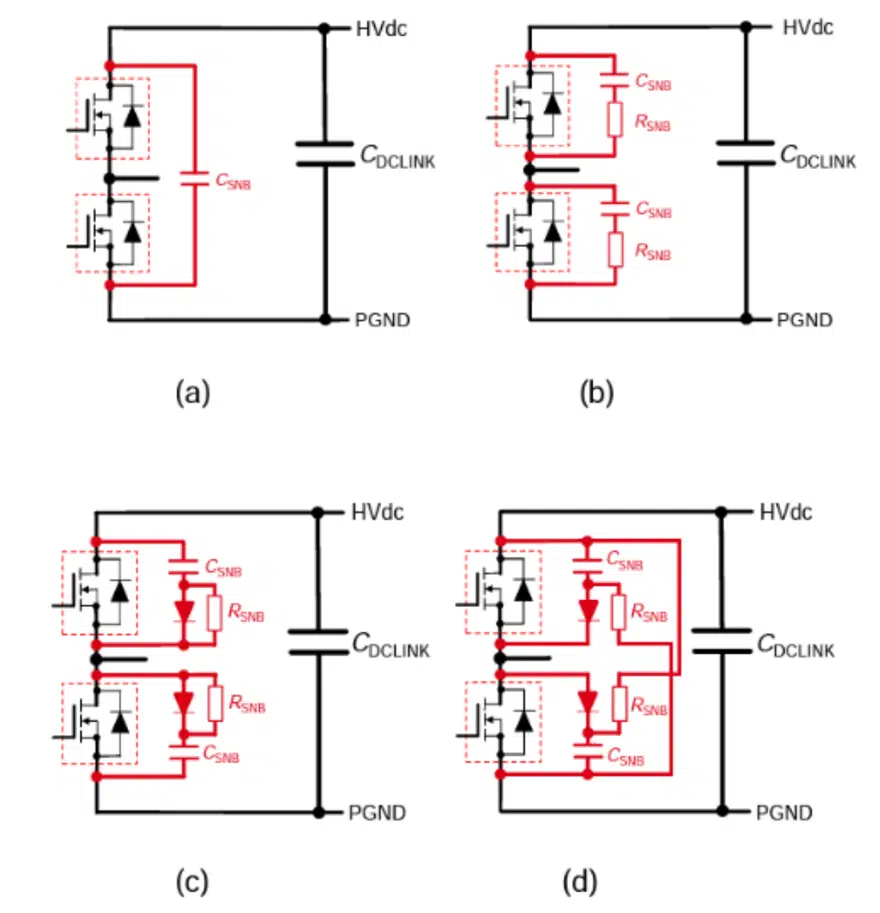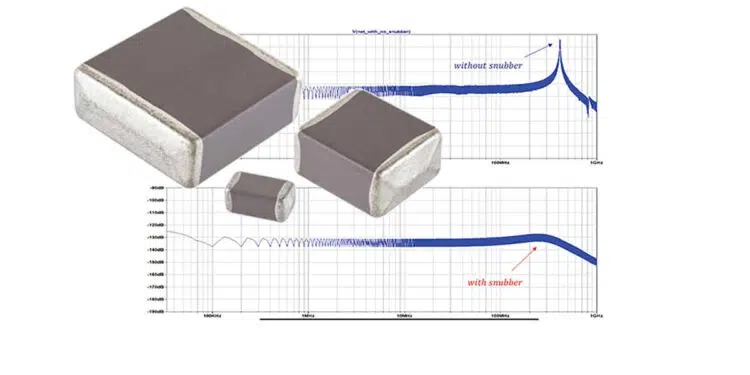The blog article published by Knowles Precision Devices provides guidance on how to select the optimal snubber capacitor for SiC-based switching converters.
Today, most converter circuits now include semiconductors and switches made of silicon carbide (SiC) instead of plain old silicon (Si). This is because when silicon and carbon are combined, the resulting material, SiC, has excellent mechanical, chemical, and thermal properties. Therefore, SiC-based converters can handle voltages up to 10 times greater than converters using just Si while also offering lower losses.
These characteristics make these converters an excellent option for applications such as power electronics, industrial devices, and electric vehicle (EV) charging stations. In this first post, we dive into the advantages of using snubber circuits to protect SiC-based converters and discuss how to further increase these efficiencies by focusing on capacitor selection.
Using Snubber Circuits for SiC Switching Converters
When switching occurs quickly, dv/dt and di/dt increase, which, when coupled with stray inductance, can result in a large surge voltage and/or current. To be sure you do not exceed the maximum rated voltage/current of the device, a method to control surge voltage and current is needed. One efficient way to do this is to use a snubber circuit. Using a snubber circuit in a switching converter offers the following benefits:
- Protecting against voltage and/or current spikes
- Reducing dv/dt and di/dt
- Smoothing out ringing
- Keeping loads in safe operating condition range
- Minimizing losses, oscillation effects, and electromagnetic interference (EMI)
- Transferring power dissipation
When using SiC as a base material for power switching device, these benefits are magnified as SiC provides the following benefits over using just Si:
- Higher thermal conductivity to provide more efficient heat transfer
- Lower leakage currents
- Ability to withstand a voltage gradient that is more than eight times higher, enabling components to withstand higher voltages in the same package
- Greater switching frequencies
Different Snubber Circuit Configurations
There are multiple ways to build a snubber circuit in a converter. Figure 1 shows four common configurations.

Let’s explore each of these configurations a little more. A C snubber has a simpler design that does not include a resistor and is best suited for 2-in-1 modules instead of circuits with discrete components. An RC snubber adds a resistor into the circuit and the energy stored in CSNB must be dissipated by RSNB during each switching transient. Having the resistor in the snubber circuit protects the circuit against larger di/dt as it reduces the discharge current of the capacitor.
For higher power applications, a diode can be added to create an RCD snubber where the diode is used to block current in the network as the transistor turns on. There are two different types of RCD snubbers – discharge and non-discharge. With a discharge RCD snubber, the surge current flows through the diode and makes CSNB absorption more effective than it is in an RC snubber. A non-discharge RCD snubber only consumes energy from the surge voltage, which means the energy consumption at RSNB does not increase a lot at high switching frequencies.
Considerations for Selecting the Right Capacitor for Snubber Circuits
Whether you are designing a snubber for SiC, Si, or GaN technology, as shown in Figure 1, all snubber circuit configurations include a snubber capacitor. However, since SiC has very different characteristics than Si or GaN and is frequently used for applications that need to operate at high voltages and currents, understanding how to select the most appropriate capacitor is crucial.
Snubber capacitors for SiC-based circuits typically have smaller capacitance values and need to sit close to the switches to reduce wire inductance. Therefore, specifications for these capacitors that need to be taken into consideration include the package size and type, dielectric, electrode type, voltage and capacitance range, and Irms. Since SiC parts also tend to run hot, the snubber capacitor must be heat tolerant.
MLCC class 1 ceramic capacitors offer high stability in the form of C0G dielectrics, and can achieve high capacitance and high voltage as seen optimal snubber capacitor for SiC-based circuits. The capacitors’ portfolio offers a wide range of voltages, from 630V to above 4kV, that can be readily used as snubbers to match the voltage rating of existing high-performance SiC devices in the market.
See also article: RC snubber design for SMPS protection.


































